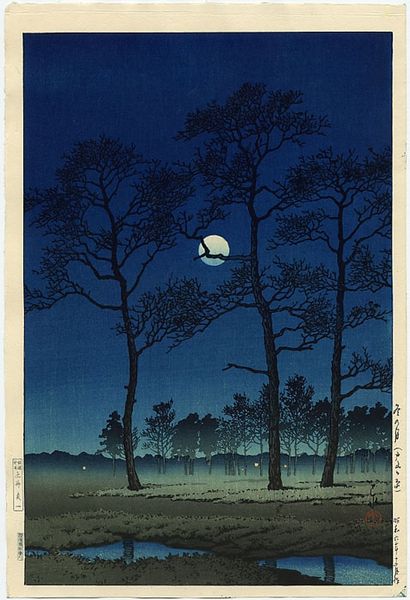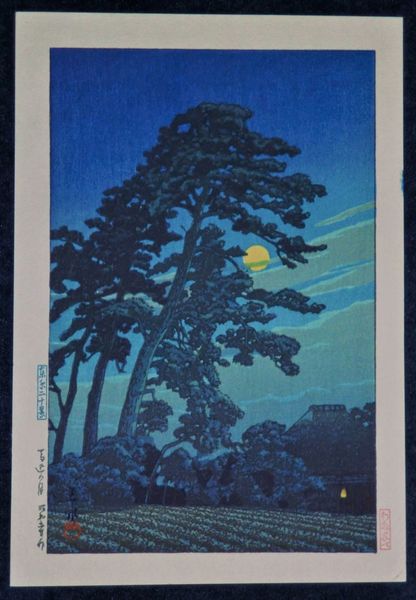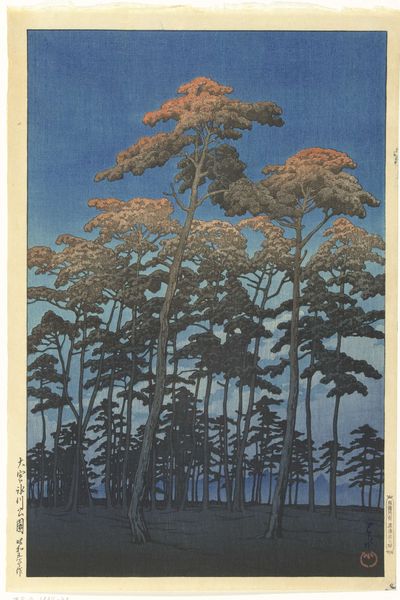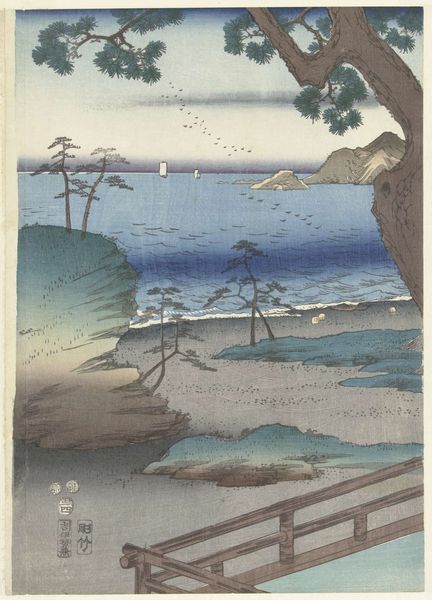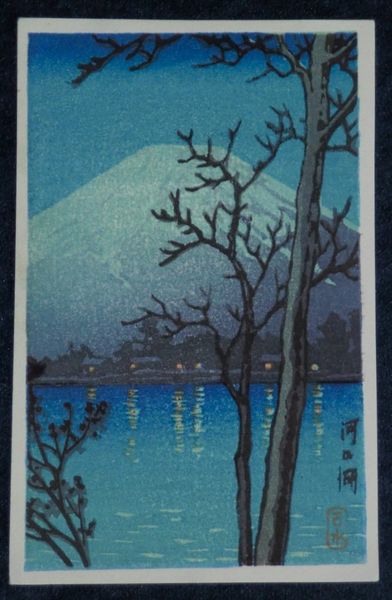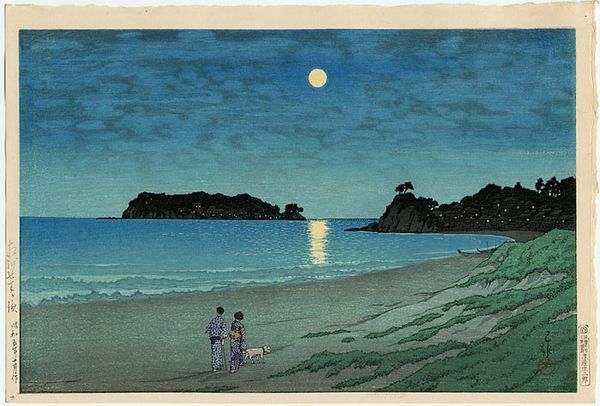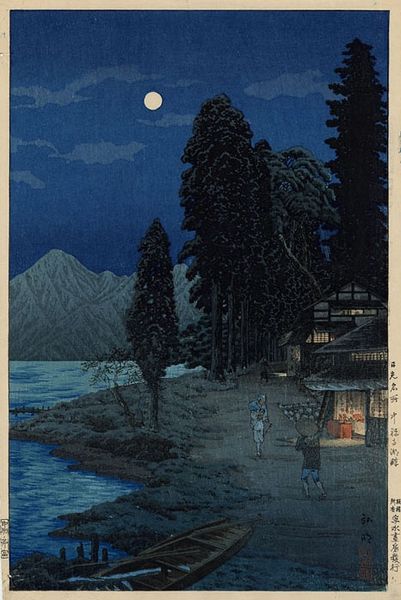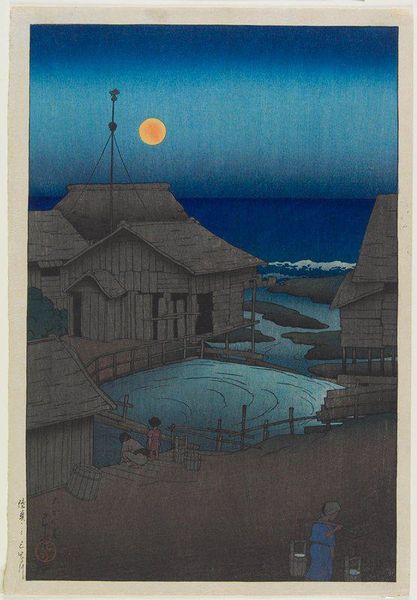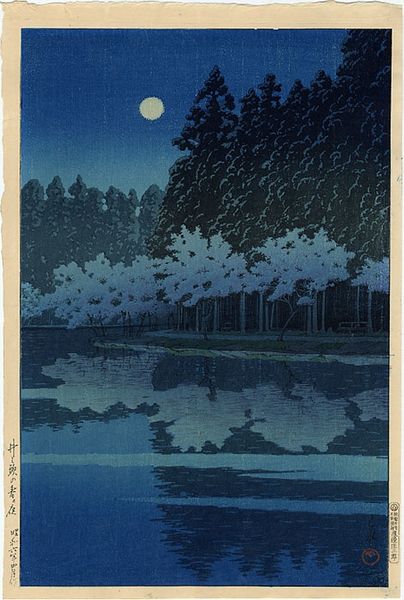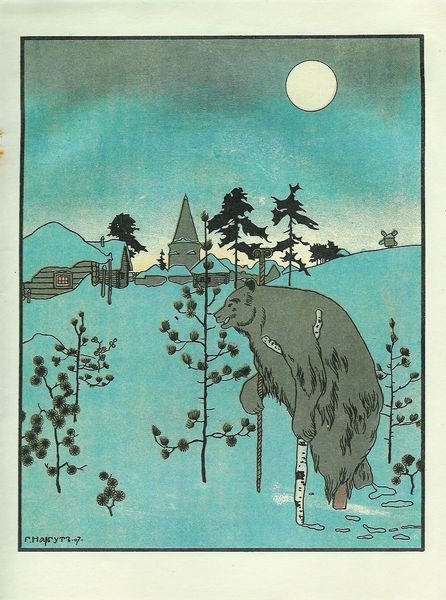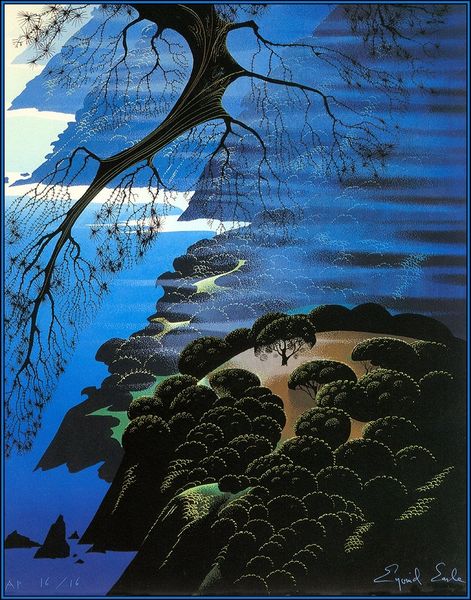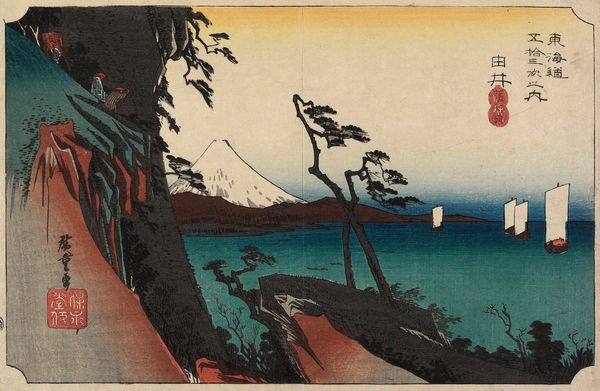
Copyright: Public domain Japan
Hasui Kawase created this woodblock print of Ninomiya Beach. It's difficult to date precisely, but we know it was made in the early to mid-twentieth century, a period of great social and artistic change in Japan. The image reflects a nostalgic view of the Japanese landscape. This view was very popular at a time when rapid industrialization threatened traditional ways of life. Kawase belonged to the Shin-Hanga movement, which combined traditional Ukiyo-e techniques with Western artistic influences. This movement aimed to preserve traditional Japanese aesthetics while adapting to modern tastes and international markets. We can consider the role of institutions like art schools and publishing houses in shaping the production and distribution of these prints. These institutions helped to revive interest in traditional Japanese art forms. By studying these cultural and institutional factors, we can better understand the complex relationship between art, society, and cultural identity in twentieth-century Japan.
Comments
No comments
Be the first to comment and join the conversation on the ultimate creative platform.
